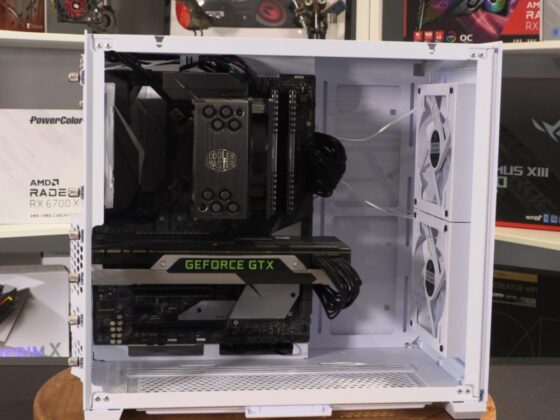The balance of life changes in gaming are a hot topic, with developers changing the game to make it more accessible and enjoyable for players. This is good for gamers who want to play games without having to sacrifice quality of life, but can also lead to some unintended consequences.
Originally published on this site.
Only Dev Replies may be found here.
Alfray Stryke and Gruntsatwork collaborated on this piece.
Hello there, everyone!
I’m Alfray Stryke, a member of Stellaris’ QA team. As stated in Dev Diary #215, as part of the Custodians’ work on the 3.1 “Lem” patch, the team has done a balancing and Quality of Life pass on numerous aspects across the game, and we’d like to highlight some of the most difficult adjustments. This is not an exhaustive list of all changes, and some figures may not be final. As a reminder, the modifications to the Necroids Species Pack were discussed in Dev Diary #216, and the Lem update will contain all of these improvements.
Dwellers of the Void
We were aware that the implementation of two distinct characteristics, one good and one bad, in Void Dwellers led in behavior that we didn’t like – especially the ability to gene-mod the negative parts of the feature out of existence. To address this, we’ve made the following modifications to the traits:
- Because there is now just one Void Dweller characteristic, genetic alteration of your species is no longer an option.
- The trait’s modifiers have changed; before, it provided:
- +15% resources from worker and specialist occupations, and a -10% growth rate (for the positive version)
- -60% annual growth rate (for the negative version)
- This is the new version of the trait:
- Pop Resource Output on Habitats has increased by 15%.
- Non-Artificial Worlds have a -15 percent Pop Resource Output.
- -10% Increase in Growth Rate
- On non-artificial worlds, happiness is reduced by 30%.

The Void Dweller trait, as well as its modifications.
This implies that your Void Dwellers pops will be most productive and happy on habitats, lose their benefits on ringworlds, and suffer production and happiness penalties if they settle on planets (better left to immigrants or robots!)
Ring with a Crack
So, before you get your plasma pitchforks out (yep, plasma pitchforks are now canon), the team has been talking about adjusting the Shattered Ring origin for a while. We went through many variations of reducing the origin’s initial strength while keeping the player fantasy in mind, and ultimately decided on having the Shattered Ring’s development match that of the Remnants origin.
The Voor Technocracy, displaying the Shattered Ringworld Segment as a possible homeworld.
The following district kinds are supported by the broken ring:
- Depending on your empire type, you may live in the City, Hive, or Nexus.
- Industrial – here is where important consumer items and metals are made.
- Trade – where clerks make a good living and craftsmen operate their businesses.
- Generator (not seen) — here is where their infrastructure is powered by hive-minds and machine intelligence. Generator and Trade districts, like Commercial and Generator Segments on a ringworld, switch depending on who owns the Shattered Ring.
- Food is produced for people who consume it in an agricultural setting.
- Mining – more on it later…
There will be enough room for 25 of these neighborhoods after the debris has been removed.
“Are they mining regions on my ringworld?” you may ask. “What am I mining?” you may wonder.
The solution, my reader, is the ring itself!
Mining districts, or tunnels containing precious minerals and alloys, are found across the world.
Prior to attaining spaceflight, as a civilisation that had only known existence on the ring, the only resources accessible to you were those that made up the ringworld itself. Fortunately, damaged ringworlds are large enough to save some lost shattered elements without exposing themselves to the light.
As a result, your mining district on the shattered ring substitutes normal miner jobs with scrap miner jobs, which produce 2 minerals and 1 alloy each month as a basic job output.
Of course, as previously said, we intended the broken ring’s development to mirror that of the relic world from the Remnants’ beginning. After clearing the debris from the broken ring and researching the necessary technologies, you may rebuild it into a fully functional ringworld section.
Of course, house repairs are required from time to time.
The districts on the broken ring are upgraded into their corresponding ringworld districts at a 5:1 ratio once this enormous work is completed, thus 5 agricultural districts become 1 agricultural segment. Because repairing the ring no longer requires clearing away material, the mining districts have been eliminated, and the option to build research segments has been introduced.
Changes in Ecumenopolis Quality of Life
When a planet is converted into an Ecumenopolis, the assignment of industrial areas is something we’ve had a lot of criticism on.
Prior to version 3.1, all industrial districts were believed to be dedicated to alloy manufacturing and were therefore transformed to foundry arcologies. No more, industrial areas will be converted depending on the planet’s identification in 3.1:
- Industrial areas will be converted into foundry arcologies at a 2:1 ratio under the “Foundry World” moniker.
- Industrial areas will be converted into factory arcologies at a 2:1 ratio under the “Factory World” moniker.
- Industrial districts will transform into both foundry and factory arcologies at a 4:1:1 ratio with any other classification, including the “Industrial World” designation.

Earth, a remnant of a long-ago era, waiting to be resurrected.
Earth has been reborn! It’s worth noting that the local governance algorithm didn’t presume that all industrial skills should be devoted to helping the Custodianship Navy.
Another update is that Rogue Servitors may now access the Arcology Project ascension perk and the option to restore relic planets to ecumenopolises. Furthermore, the leisure arcologies that were previously there have been converted to house bio-trophies in magnificent towering arcologies.
At 9:26 a.m., pampering will be given on Floor 314, Room 15.
Changes in Quality of Life
Because we’ve introduced an Industrial World classification, the planetary designation for consumer products has been changed to Factory World.
For your different requirements, there are several planetary designations.
The new Industrial World classification is excellent for planets when you don’t want to concentrate the Industrial districts on a single job type, instead giving both Artisan and Metallurgist occupations a small maintenance discount.
Designation in the Industrial World
The Temple of Prosperity is no longer accessible to subversive cults (MegaCorps with both Gospel of the Masses and Criminal Syndicate). Instead, they may now open a Subversive Shrine at one of their branch offices, attracting both Spiritualist ideals and criminal activity to the planet.
Subvert expectations with offers that are so amazing they’re illegal!
With that, I’ll turn things over to Gruntsatwork to talk about some of the civics modifications we’ve done!
Hello there, everyone. I am a member of the Custodian Team and one of the game designers presently working on Stellaris. While we’ve been busy with dramatic modifications, new civics, and origins, we also wanted to make some more subtle but equally essential balancing adjustments to our current civics, particularly our outliers and those we thought were under- or over-utilized.
The following is a list of all the civics we thought required a significant upgrade.
Empires of the Ordinary
- Beacon of Liberty: +15 percent generated Unity -> Now ALSO provides -15 percent Empire Sprawl from Pops.
- Imperial Cult: Previously granted +1 Edict cap; now grants +2 Edict cap.
- Idealistic Foundation: Previously gave +5% Happiness -> Now provides +10% Happiness
- Environmentalist: Gave -10% Consumer Goods Maintenance -> Now provides -20% Consumer Goods Maintenance
- Faction Influence: +25 percent in Parliamentary System -> +40 percent in Parliamentary System
- Efficient Bureaucracy: Previously, a +10 percent administrative cap was granted; now, a +20 percent administrative cap is granted.
- Nationalistic Zeal: Previously gave a -10% War Exhaustion Gain and a -10% Claim Cost -> now provides a -20% War Exhaustion Gain and a -15% Claim Cost
- -10% Building and District Cost, -10% Building and District Upkeep, and +1 Building Slot were added to the functional architecture. -15% Building and District Costs, +2 Building Slots, and the Upkeep Reduction has been eliminated.

Hive-Minds
- Subspace Ephase: Previously granted +15 percent naval capacity -> now grants +20 percent ship speed as well as +15 percent naval capacity.
- Disparate Attention: Previously, +10 percent admin cap was granted; now, +20 percent admin cap is granted.
Artificial Intelligence (AI)
- Constructobot: -10% Building and District Cost, -10% Building and District Maintenance, and +1 Building Slot -> Now provides -15% Building and District Costs, +2 Building Slots, and the Upkeep Reduction has been eliminated.
We’re hoping that those modifications, although purely numerical, will breathe new life into those civics and broaden their appeal to a broader audience, since “oh, shiny new numbers” is a powerful addiction.
Unfortunately, just boosting the civics we thought were undervalued or under-used isn’t enough to address all problems, so we added some minor nerfs to the two (3) most egregious offenders in terms of being “must have” civics.
- Slaver Guilds: Reduced the number of enslaved people from 40% to 35%.
- Indentured Assets: The enslaved population was reduced from 40% to 35%. (Megacorp civic)
- Technocracy: Added 1 Consumer Goods Maintenance to Scientist Jobs that bring people together.
As you can see, this is a small adjustment for slaver guild civics compared to the Technocracy nerf. The objective is to make those three civics somewhat worse. We have no plans to nerf them into submission. Our aim is to change their mindset from “best choice every time” to “may be best option depending on circumstances.”
We’ll be carefully monitoring your input here and across all other platforms, as well as our own telemetry, and we’ll continue to modify and improve the civics as time goes on.
As an aside, we’re aware that there are a number of other civics that might need a boost; we’ll look at them as well, but not for the Lem release.
That’s all we have for this week! Thank you for reading, and we’ll be back next week to discuss more Lem Update improvements.
Are you looking for PC games to play? Here are all of the new PC games to keep an eye on in 2023.
The pace of PlayStation 4 game releases isn’t going to slow down in 2023. Here’s everything to look forward to in the coming months.
Frequently Asked Questions
Whats does DD mean?
DD stands for Dynamic Difficulty, which is the difficulty level that the game adjusts to match the players skill.
What does DD mean in research?
D is for data, and it can be used as a placeholder or to indicate that the information has not been found.
What is the Dunkin app?
The Dunkin app is a mobile application that allows you to order food from your phone.


